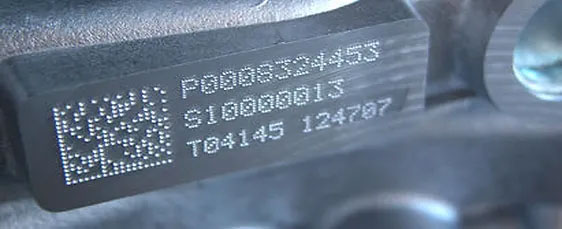In this 2D vs 3D barcode article, we will explore the unique characteristics of 2D barcodes and 3D barcodes and uncover the key differences between the two.

A 2D (two-dimensional) barcode is a type of barcode that encodes data in both the horizontal and vertical dimensions. These barcodes are commonly found on products, packaging, and printed materials, making them easily scannable with smartphones and barcode scanners.
Data Density: 2D barcodes can store a significantly larger amount of data compared to their 1D counterparts. This makes them ideal for encoding complex information, such as URLs or contact details.
Design Versatility: Unlike linear barcodes, 2D barcodes can be designed with various shapes and patterns, allowing for creative customization while maintaining scanability.
Error Correction: 2D barcodes often include error correction techniques, ensuring data integrity even if part of the code is damaged or obscured.
Multi-Functionality: They can link to various types of content, such as websites, videos, or contact cards, expanding their application beyond simple identification.

A 3D (three-dimensional) barcode is a relatively newer technology that represents data in three dimensions. These barcodes are commonly found in industries requiring advanced tracking and inventory management systems, such as aerospace and automotive manufacturing.
Physical Structure: Unlike 2D barcodes that rely on patterns and shapes, 3D barcodes consist of physical structures, often resembling miniature sculptures or stacked layers.
Volumetric Data: 3D barcodes encode volumetric data, allowing for precise information about the dimensions and shapes of objects, which is invaluable in manufacturing and quality control.
Complex Data Representation: They excel in representing intricate data, such as the specifications of complex mechanical parts, by using precise geometrical shapes.
Industrial Applications: 3D barcodes are commonly used in industries where precise tracking and quality control are crucial, such as aerospace, automotive, and advanced manufacturing.

Although 3D and 2D barcodes are similar, they have unique differences. We will explore these below.
2D Barcode: 2D barcodes encode data in two dimensions, using patterns and shapes. They are suitable for encoding various types of data, such as text, URLs, or contact information.
3D Barcode: 3D barcodes represent data in three dimensions, often using physical structures or precise geometrical shapes. They specialize in encoding volumetric data and complex information, like detailed object specifications.
2D Barcode: 2D barcodes provide design flexibility for branding and aesthetics. They can be customized with various shapes, patterns, and colors.
3D Barcode: 3D barcodes typically have a standardized, utilitarian appearance. They prioritize functionality and precise data representation over aesthetics.
2D Barcode: 2D barcodes have limited data storage capacity compared to 3D barcodes. They are ideal for basic identification and straightforward information.
3D Barcode: 3D barcodes offer high data density, capable of storing detailed volumetric information. They excel in encoding complex and intricate data.
2D Barcode: 2D barcodes are easily scannable with smartphones and common barcode scanners. They require standard scanning technology widely available to consumers.
3D Barcode: 3D barcodes often necessitate specialized imaging equipment due to their complex physical structure. They require more advanced technology for accurate scanning.
2D Barcode: 2D barcodes are widely used across multiple industries, including retail, marketing, logistics, and healthcare. They are commonly seen in product packaging, advertising, and identification cards.
3D Barcode: 3D barcodes are primarily employed in specialized industrial sectors, such as aerospace, automotive, and advanced manufacturing. They are used for tasks like quality control, tracking complex parts, and detailed object identification.
2D Barcode: 2D barcodes are versatile and commonly used in consumer and commercial applications. They are found in retail, marketing, inventory management, and more.
3D Barcode: 3D barcodes are primarily used in industrial settings, particularly for quality control and precise object identification. They are commonly seen in aerospace, automotive, and advanced manufacturing.
We hope that our 2D vs 3D Barcode article has now left you with a better understanding of the key differences between 2D barcodes and 3D barcodes.
If you enjoyed this article, you might also like our article on 3D barcodes or our article on thin barcodes.